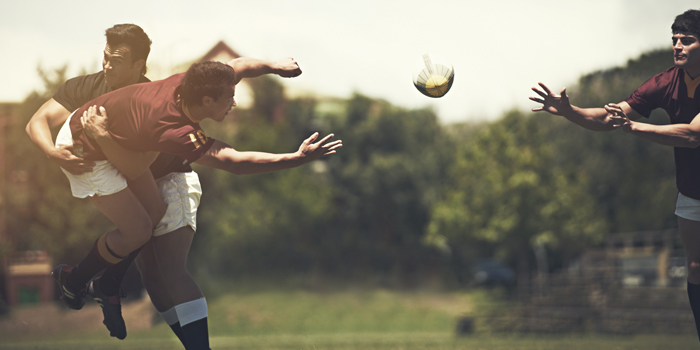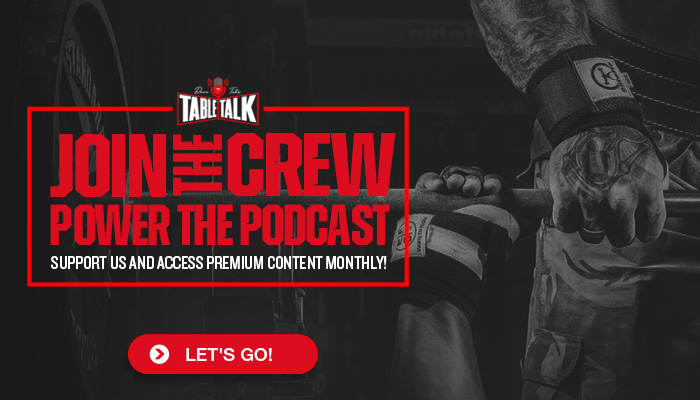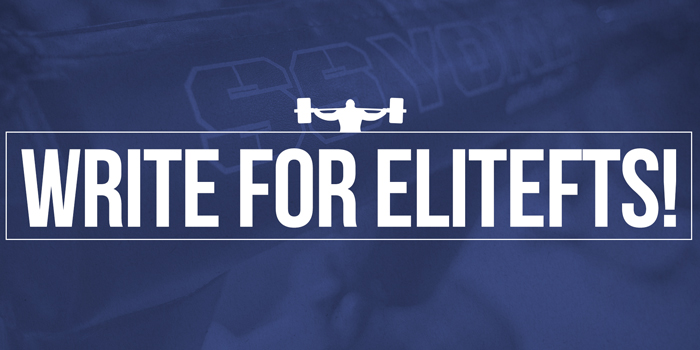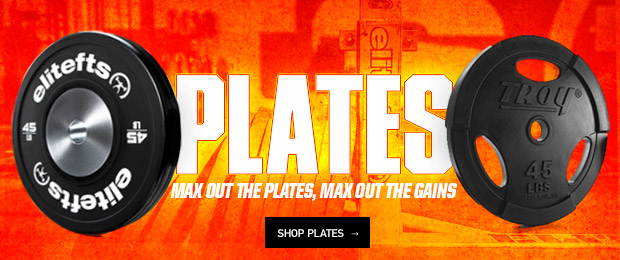
After almost 50 years in this Iron Game of ours, a few truths have stood the test of time. I believe these few truths can be considered the Laws of the Iron. I have always wanted to do the presentation below at a fitness or strength and conditioning conference to make people fully aware of the reality of training. Basically, to inform people that training is nowhere near as complex and confusing as many who complicate it in order to profit would have you believe.
A few years back, Bryan Mann wrote a brilliant article on program design, The Four Cornerstones of Sound Program Design, in which he detailed an excellent process for assisting coaches in developing winning programs. He detailed the what, why, how, and where of training and delves into trait selection, what is being trained, and what the goals of training are. I have used a programming process based on his ideas in developing my programs.
These programming processes focus on determining priorities: neural (speed and power), mechanical (size and strength), metabolic (fitness), hybrids, selecting methods, focusing on training days (full body or split) and how many sessions a week, select movement categories and exercises, and finally on sets, reps, loading and rest.
The Laws of Iron
1. Determining Priorities
I developed classifications of training based on the needs of the players I coached, heavily influenced by the genius that is Louie Simmons. All qualities need to be trained concurrently, otherwise, gains will be diminished if you train in a traditional periodised style. Prioritisation places the emphasis on the. Training on the area of weakness but does not exclude the areas of strength in the training process, these are the areas I came up with for the individualization of training. Neural (speed and power), Mechanical (size and strength), Metabolic (fitness), Hybrids. In a hybrid, there is usually a bi-modal aspect to training, whereas in the other three, it is a more uni-modal approach.
2. Select Methods
To borrow from Louie, “Everything works, but nothing works forever.”
This is not an exclusive list by any means, but I have trained in each of these styles/methods over the last five decades. Each method produced results, some more than others, and I have come to the conclusion that there is no perfect program. Instead, you need to experiment to find what works for you and then commit to it for a good period of time, at least three to six months.
“Plan your Work, then Work your Plan” Napoleon Hill.
Heavy and Basic is for beginners and anyone who wants to get bigger and stronger. I started my lifting journey in a gym filled with powerbuilders, who readily corrected my technique and kept me on the path. Any signs of "ego lifting," lifting above my current level that needed a break in technique, were met with a clip around the ears, and heaven helped me if I was seen to do concentration curls or similar movements. A quote from one of these men was, "You can't carve a spatchcock." Stick to the big exercises until you are the size of a turkey, at least before you even think of isolation (carving) routines. Bill Pearl or Reg Park, or probably both, have been credited with saying, "If you can press behind the neck 300 pounds, you do not need to do lateral raises".
3. Training Days
Often, training days will be dictated by the methods you choose, but there are so many variations between them. You could trial a variation of full body and split training over a year to determine what works best for you and the time constraints you have to train within. Full body, Upper/Lower Split, Anterior/Posterior Split, Body part Split, and Push/Pull/Squat split, just to name a few, are all splits that work over time.
4. Select Movement Categories and Exercises
The first task I set for myself when I begin in a new weight room is to list the movement categories that best suit the group I am about to program for. I tend to favor the following for my groups based on my training priorities of Neural and Mechanical, which match up well with the Bill Starr approach of a Pull, Push, and Squat and the Dave John approach of a Squat, Hinge, Upper Body Push, Upper Body Pull. I also currently have both planes of movement in my upper body selections, both bilateral and unilateral categories.
5. Sets, Reps, Loading and Rest
I can develop a three—or four-week plan to optimize performance. My preference currently is a three-week, basic linear intensification plan that caters to the various aspects of training with my group.
| Weeks Types | Unilateral, DB/KB, Machine and Hypertrophy | Bilateral Strength and Power | Plyometrics and Med Ball | CARE |
| 1 | 4 x 12, 10, 8, 8 | 4 x 3/3 Cluster @ 80+% Or 4 x 6 | 4 x 6 | 2 x 12 |
| 2 | 4 x 10, 8, 6, 6 | 4 x 2/2 Cluster @ 85+% Or 4 x 4 | 4 x 4 | 2 x 10 |
| 3 | 4 x 8, 6, 4, 4 | 4 x 1/1 Cluster @ 90+% Or 4 x 2 | 4 x 2 | 2 x 8 |
My Laws of Iron
- Strength underpins all other qualities, Train for Strength and Size will Follow.
- Performance exercise choice is based on movement patterns, CARE programming is based on muscles
- Training time should be 60 – 90 minutes in total
- Unilateral movements should be included in any good program to identify and help correct weaknesses
- Focus on the muscles you cannot see (pulling movements for both upper body and lower body). As Louie said, "You're not quad dominant. You are hamstring weak."
- Technique should ALWAYS dictate the load used, not the opposite.
- Change the main movements and assistance exercises every three to four weeks to attain the best adaptions from the neural system. Use a variety of angles, bars, loading patterns, exercise selections, and equipment variations to sort out what best works for you.
- The ability to train is governed by the ability to recover, so less is often more.
Here is the weekly plan I am currently implementing with the group I am working with. There is usually a game on Saturday; if not, the back end of the week will follow a similar structure to Monday and Tuesday, which is more like an off-season plan.
Weekly Program Plan
Monday Beastly Circuit + 1 x UB Strength Push s/s Pull + CARE
OR
UB Size + CARE
Tuesday LB Strength and Power + Unilateral Squat s/s Hinge + CARE
OR
LB Size + CARE
Wednesday Recovery
Thursday FB Power and Strength + CARE
Friday Recovery
Here are the programs I am currently implementing with my group at present.
Upper Body Size Complexes
Pectoral Complex
Triple Drop DB Bench Press 45°, 30°, 15° 3 x 5 at each angle, no rest, + Hands Elevated Push Ups to concentric failure immediately after last angle, 60-90 seconds rest between sets
Delts Complex
KB Single Arm Savickas Press/Lu Raise/Seated Plate Raise to Overhead position/Banded Victory Raise
3 x 12 on each with zero rest in between exercises and 60-90 seconds rest between complexes
Upper Back Complex
Seated KB Shrugs (slight lean forward, shrug straight up)/Seated Long Cable Row/Close Grip Pulldowns to Chest/Banded Face Pulls
3 x 12 on each with zero rest in between exercises and 60-90 seconds rest between complexes
Arms
Triceps: Low Incline DB Tate Press 3x12 s/s Dips 3xmax
Biceps: Matrix EZ Bar Curls 3x (5 full/5 top half/5 bottom half/5 full) s/s Chins 3xmax
Beastly Circuit
Hang Power Clean
Front Squat
Push Press
Bent-Over Row
Romanian Deadlift
2km Watt Bike or 750m Row or 500m Ski Erg or 6 lengths Sand Bag Carry
Upper Body Size (Hypertrophy)
Choose from the Exercise Selection Chart
1 x horizontal push s/s pull (bilateral)
1 x vertical push s/s pull (bilateral)
1 x Unilateral push s/s pull (unilateral)
Using only DB’s or KB’s or Machines (Hypertrophy sets and reps)
Lower Body Size Complexes
Quad Dominant
Leg Extension/Leg Press/Slant Board Goblet Squat
3 x 12 reps, / means no rest between exercises, 3 seconds up and 3 seconds down, do not let the weights touch on the Leg Extension, do not lock the knees on the Leg Press or Goblet Squat
Hamstring Dominant
Seated Leg Curl/Romanian Deadlift/Harrop Curls
3 x 12 reps, / means no rest between exercises, 3 seconds up and 3 seconds down, do not let the weights touch on the Leg Curl
Unilateral Finisher
Bulgarian Sprinter’s Squat super set Single Leg Hip Thrust
3 x 12
French Contrast Method Lower Body
| Option One | Option Two |
| 1a: Deadlift variations | 2a: Squat variations |
| 1b: Wk1- Repeat Hurdle Hops Wk2- Knees to One Foot Wk3- Single Leg Depth Jump to Split Landing | 2a: Wk1 - Seated Box Jumps with Feet Stamp Wk2 – Box Jumps Wk3 – Depth Jumps |
| 1c: Band Box Squat 40%/50%/60% or Jump Squats | 2c: Clean variations |
| 1d: Wk1 – Assisted Long Jumps Wk2 – Borzov Hops Wk3 – Repeat High Hurdle Jumps | 2d: Wk1 – Band Assisted Vertical Jumps Wk2 – Low Box Speed Hops Wk3 – Band Assisted Sprint |
+
Unilateral Squat s/s Hinge
Lower Body Power + Upper Body Power and Strength Training
Lower Body Power Complex
1A: Power Clean/Snatch or Hang Clean/Snatch or Clean/Snatch Pulls or Trap Bar Jump Shrugs
1B: Assisted Long Jumps(wk1), Seated to Box Jumps(wk2), Depth Jumps(wk3)
1B: Knees to One Foot(wk1), Single Leg Box Hops(wk2), Single Leg Drop to Split(wk3)
1C: Jump Squat or Band Box Squats or Banded Step Ups or Jump Split Squats
1D: Repeat Hurdle Hops(wk1), Band Assisted Sprint(wk2), 10 metre Run Rocket(wk3)
Upper Body French Contrast Method
1A: Bench or Incline or Military Press
1B: MB Drops (wk1), Clap Push Ups (wk2), Wheelbarrow Arm Jumps (wk3)
1C: Push Press or Landmine Split Jerk or Band Bench Press
1D: MB Chest Pass to Wall (wk1), Partner MB Pass (wk2), Plyo Push Ups (wk3)
Full Body Power
1a: Overspeed Acceleration (short bungee) 10 meters
1b: Knees to One Foot (week 1: 4 x 6)
1b: Single Leg Box Hops (week 2: 4 x 4)
1b: Single Leg Depth Jump to Split (week 3: 4 x 2)
1c: Resisted Acceleration Run Rocket 10 meters
2a: Explosive Pull 2b: Explosive Push 2c: Explosive Squat
Ashley Jones has worked in three professional sports across 30 years and four continents. He was awarded the NSCA's Professional Coach of the Year in 2016. Ashley holds his CSCS (Certified Strength and Conditioning Specialist) since 1988 and is an honorary lecturer in the School of Therapeutic Sciences, University of Witwatersrand, Johannesburg, SA.











